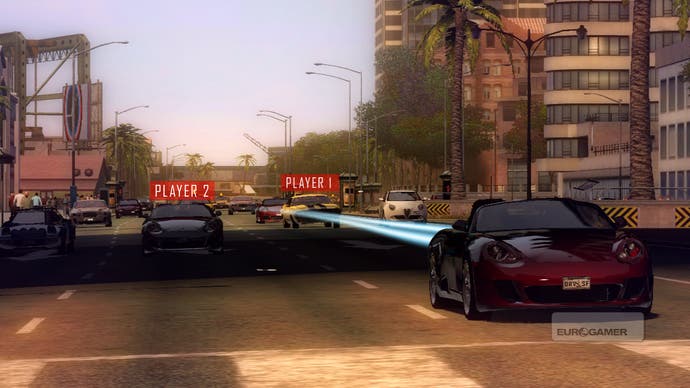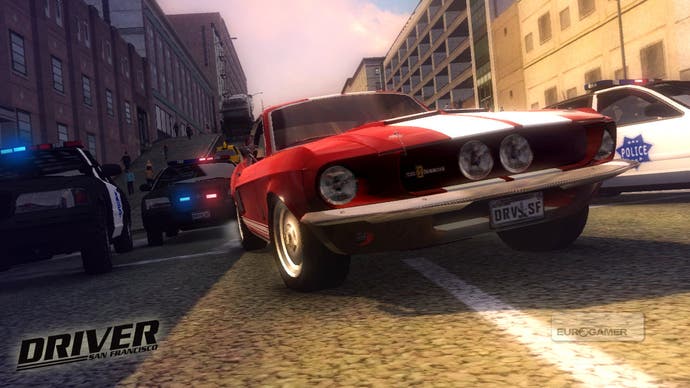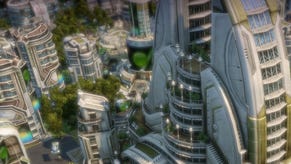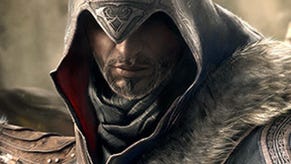Driver: San Francisco
Life on cars.
On top of that the team has had to build AI that can leap in behind the player and take over abandoned cars at will. With all that going on, it's astonishing that Reflections has managed to give the cars such personality, too. More than most driving games, this is a series where the handling alone is a character, and it's fascinating as you Shift between vehicles to see just how different they feel, from the stodgy Dodge Neon to the fragile Zonda.
If it's hard to tell just how single-player is going to unfold at the moment, multiplayer is much easier to get a handle on. The finished game will have nine different modes - and a now-obligatory experience points system - but Reflections is only showing one for the time being: Trail Blazer.
Trail Blazer is theoretically very simple: stay within the neon light-trails of an AI-driven target car to earn points, with the first player to get to 100 winning. Shift, however, changes all that. Unlike with the main game, Shift power is currently unlimited in Trail Blazer, and with four players each battle for supremacy quickly becomes insane as you leap in and out of different cars, leapfrogging each other to stay in the scoring zone.

The AI car weaves about a bit - possibly to make it more challenging but possibly because my dad is driving - and the game does a beautiful job of balancing the all-out chaos as you fight to get to the front, with a sweet note of pure precision as you seek to then stick tightly within the light trails and stay there.
Played on a stretch of downtown San Francisco (I could tell it was downtown because I was charged eight dollars for a watermelon juice) Trail Blazer feels nothing like a normal driving game. Actually, its lineage is rather hard to untangle: there's a hint of Mario Kart's battle modes in there, certainly, but a little of the frenetic brinksmanship of Mashed - gone but definitely not forgotten - and the treasure-sifting element of something like Monster Hunter as you Shift and then roam around looking for something special to steal. You almost always find something special too. Hints: Deloreans and the new Fiat 500s.
Pretty soon after getting to grips with it, Driver's out-of-body weirdness settles down, and you start to enjoy a racing game that you can play a little like God might - and it turns out that God really doesn't like taking corners. He prefers, instead, to hop from one car on a straight to another car on the next straight, and such impromptu tactics give Reflections' latest a unique rhythm, a rhythm that's both strategic and hilariously cruel.

It's going to be weird, after long sessions, to return to games where you can't do this, and there's a special kind of pleasure that comes from executing a barge manoeuvre so perfectly that you can then watch to see a rival Shift into a speeding Maserati just as it piles through a wall.
Something has to suffer, of course, and due to the huge world and massive numbers of cars, the textures can be a little rough. It's earlyish days, however, and the lighting, more importantly, is already beautiful, with god rays lancing through the skyscrapers as you drive around America's most iconic car-chase city.
Such confidence masks the fact that Reflections is taking a big risk with Driver. Shift is a game-changer, and it's going to be fascinating to see how it works when stretched across an entire disk. As such, I can't wait to see how single-player copes with this sudden injection of Quantum Leap into its DNA, and I certainly can't wait to have another go on that multiplayer.
Driver: San Francisco is due out for PC, PS3 and Xbox 360 in Q4 2010.
















